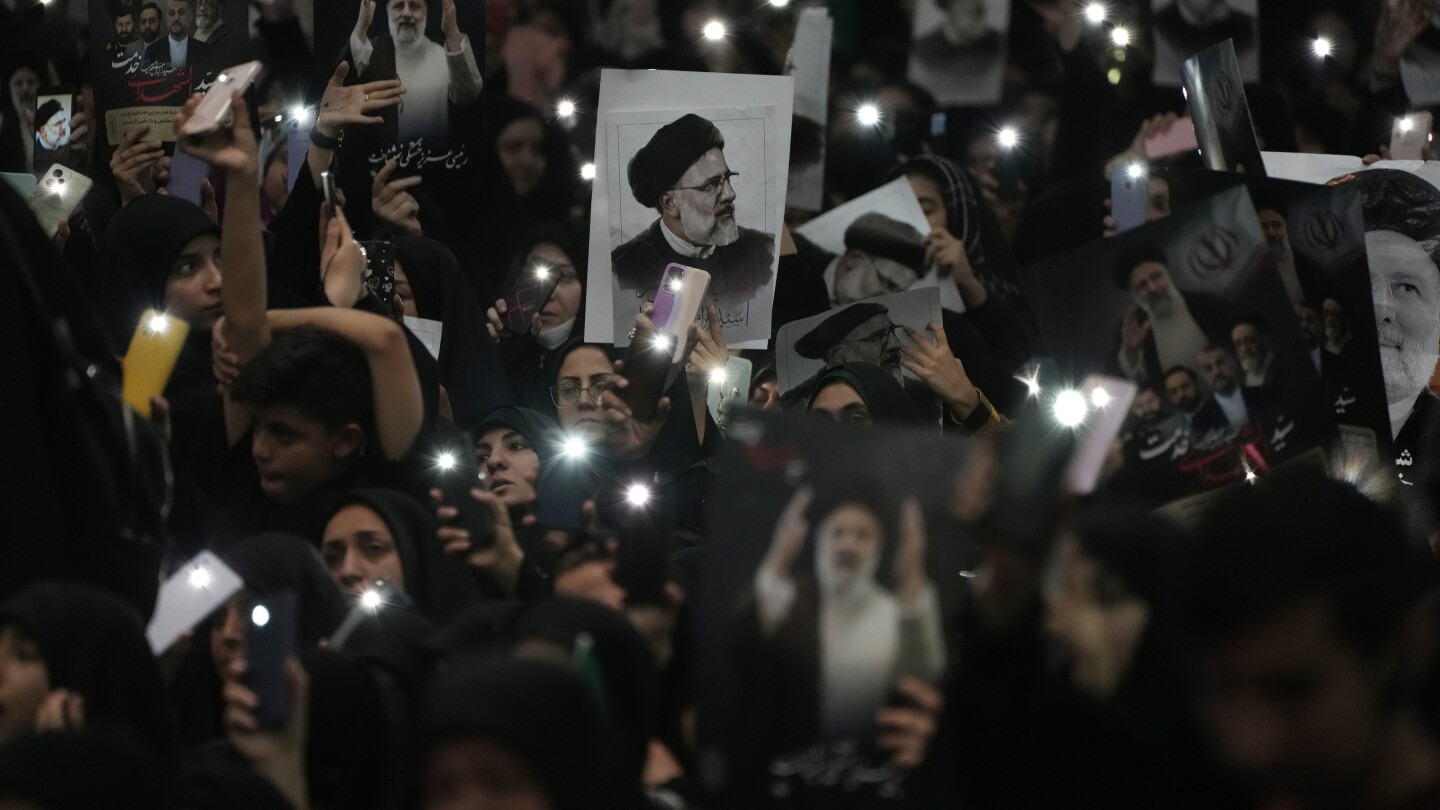DUBAI, United Arab Emirates (AP) — Iran’s supreme leader will preside over a funeral Wednesday for the country’s late president, foreign minister and others killed in a helicopter crash.
Ayatollah Ali Khamenei will begin the service at Tehran University, the caskets of the dead draped in Iranian flags with their pictures on them. On the late President Ebrahim Raisi’s coffin sat a black turban — signifying his direct descendance from Islam’s Prophet Muhammad.
In attendance were top leaders of Iran’s paramilitary Revolutionary Guard, one of the country’s major centers. Also on hand was Ismail Haniyeh of Hamas, the militant group that Iran has armed and supported during the ongoing Israel-Hamas war raging in the Gaza Strip. Before the funeral, an emcee led the crowd in the chant: “Death to Israel!”
“I come in the name of the Palestinian people, in the name of the resistance factions of Gaza … to express our condolences,” Haniyeh told those gathered.
He also recounted meeting Raisi in Tehran during Ramadan, the holy Muslim fasting month, and heard the president say the Palestinian issue remains the key one of the Muslim world.
The Muslim world “must fulfil their obligations to the Palestinians to liberate their land,” Haniyeh said, recounting Raisi’s words. He also described Raisi calling the Oct. 7 attack that sparked the war, which saw 1,200 people killed and 250 others taken hostage, as an “earthquake in the heart of the Zionist entity.”
Also expected to attend services in Tehran were Pakistan’s Prime Minister Shehbaz Sharif and a delegation from the Taliban of Afghanistan, including their Foreign Minister Amir Khan Mutaqqi.
The caskets of the eight killed will then be taken on a procession through downtown Tehran to Azadi, or “Freedom,” Square — where President Ebrahim Raisi gave speeches in the past.
Iran’s theocracy declared five days of mourning over Sunday’s crash, encouraging people to attend the public mourning sessions. Typically, government employees and schoolchildren attend such events en masse, while others take part out of patriotism, curiosity or to witness historic events.
For Iran’s Shiite theocracy, mass demonstrations have been crucial to demonstrating the legitimacy of their leadership since millions thronged the streets of Tehran to welcome Grand Ayatollah Ruhollah Khomeini in 1979 during the Islamic Revolution, and also attended his funeral 10 years later. An estimated 1 million turned out in 2020 for processions for the late Revolutionary Guard Gen. Qassem Soleimani, who was slain in a U.S. drone strike in Baghdad.
Whether Raisi, Foreign Minister Hossein Amirabdollahian and others draw the same crowd remains in question, particularly as Raisi died in a helicopter crash, won his office in the lowest-turnout presidential election in the country’s history and presided over sweeping crackdowns on all dissent.
Prosecutors already have warned people over showing any public signs of celebrating his death and a heavy security force presence has been seen on the streets of Tehran since the crash.
Raisi, 63, had been discussed as a possible successor for Iran’s supreme leader, the 85-year-old Khamenei. His death now throws that selection into question, particularly as there is no heir-apparent cleric for the presidency ahead of planned June 28 elections. Iran now has an acting president, Mohammad Mokhber, who is overseeing a caretaker government for the coming weeks.
___
Associated Press writers Joseph Krauss in Dubai, United Arab Emirates; and Munir Ahmed and Riazat Butt in Islamabad contributed to this report.

